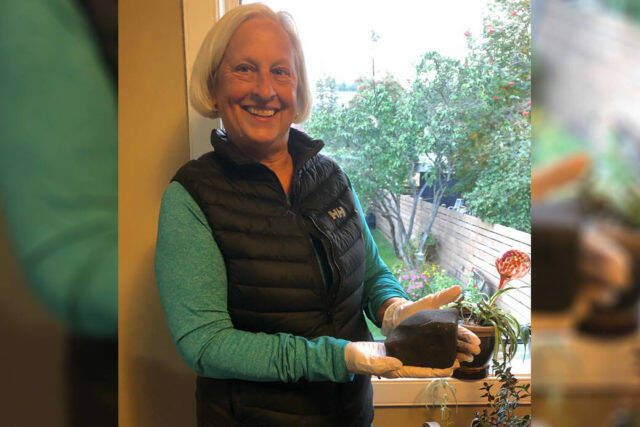Scientists studying a meteorite that landed next to a British Columbia woman’s head last year say it was diverted to that path about 470 million years ago.
The small meteorite broke through a woman’s ceiling in Golden, B.C., in October, landing on her pillow, next to where she had been sleeping moments earlier.
Philip McCausland,a lead researcher mapping the meteorite’s journey, said Monday they know the 4.5-billion-year-old rock collided with something about 470 million years ago, breaking into fragments and changing the trajectory of some of the pieces.
McCausland, who’s an adjunct professor at Western University in London, Ont., said the meteorite is of scientific significance because it will allow scientists to study how material from the asteroid belt arrives on Earth.
“There’s 50,000 to 60,000 identified meteorites now in the world, but most have no context. We don’t know really where they came from,” he said.
“In cases where we have known orbits, where they were observed coming in well enough that we can reconstruct what the orbit was before it hit the Earth’s atmosphere, we can actually (determine) where they came from in the asteroid belt. Golden is one of those,” he said, referring to the location of where the meteorite landed.
Researchers determined the meteorite is an L chondrite, one of the most commonly found types of meteorites to fall to Earth. Despite this, he said only about five L chondrites have known orbits.
He said the Canadian team is now working with scientists in Switzerland, the U.K., U.S. and Italy to learn more about the meteorite and its path to Golden.
“We know we’re still going to get something interesting out of this,” McCausland said. “We actually do want to get a good handle on how things get delivered from the asteroid belt, and this is a useful part of putting that together.”
Most of the meteorite has been returned to Ruth Hamilton, the woman who had the close call, and McCausland said it’s up to her to decide what to do with it.
Whether she decides to keep, sell or donate the rock, he said there is cultural significance of the rock to Canada. If she sells it to an international buyer, she would be required to go through the exportation process, he said.
Hamilton said she hasn’t yet made up her mind on what to do with the meteor. It’s currently sitting in a safety deposit box.
“I don’t have any plans for it right now, but once they’re done analyzing it, I’ll get all the documentation that proves it’s a meteorite,” she said. “It’s going to be officially named the Golden Meteorite.”
Before her roof is permanently repaired this spring, Hamilton said she intends to remove the section where the meteorite crashed through to keep it preserved alongside the rock.
McCausland said the research will likely conclude in May, and the scientists will then publish their work in an academic journal.
“Whenever something like this happens, I like to tell people it could happen to any of us anyone can find a meteorite. It’s unlikely one will crash through your roof, but it can happen,” McCausland said. “It’s nature and, if anything, it’s a reminder that we’re part of something bigger.”
This report by The Canadian Press was first published Jan. 17, 2022.
This story was produced with the financial assistance of the Facebook and Canadian Press News Fellowship.
READ MORE: Researcher says B.C. meteor on the pillow was a 100 billion to 1 shot
READ MORE: B.C. woman awakes to a hole in her roof and a space rock on her pillow
Like us on Facebook and follow us on Twitter.
Want to support local journalism? Make a donation here.

